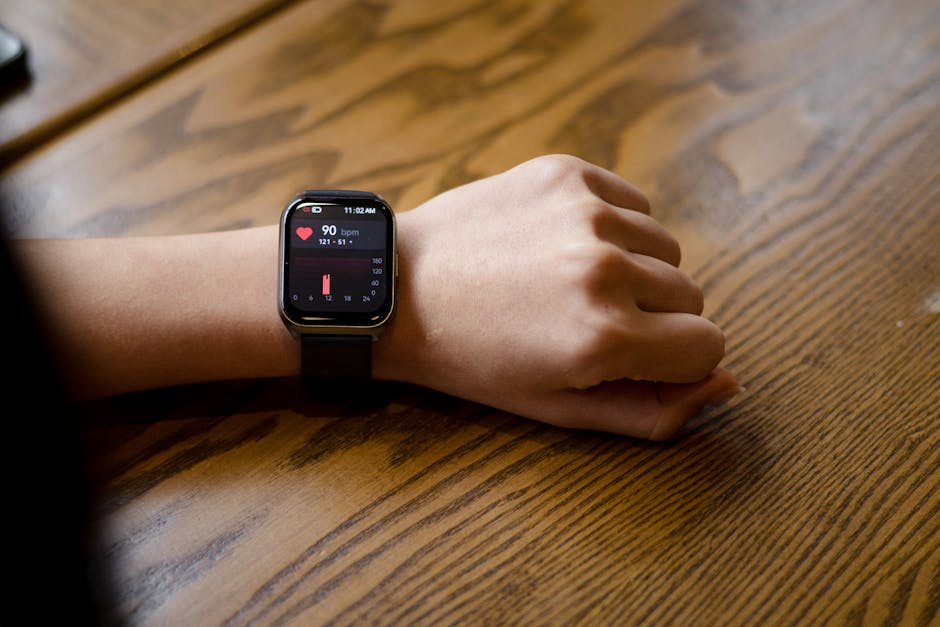Gadgets for Emotion Recognition: Discover AI's Take on Feelings
In a rapidly evolving digital landscape, understanding emotions is becoming just as crucial as grasping information. How do we recognize and respond to feelings in an age dominated by technology? Enter the realm of gadgets for emotion recognition—innovative tools harnessing artificial intelligence (AI) to dissect human emotions through an array of data sources, from biometric signals to voice and facial analysis. This fascinating intersection of technology and psychology is not just reshaping products, but it’s also transforming how we comprehend our interactions with others, revealing rich insights into mental health, relationships, and even workplace dynamics.
The Evolution of Emotion Recognition Technology

Emotion recognition is not a novel conceptualization; it has roots in psychology and neuroscience. However, advancements in AI and machine learning are reshaping its landscape, making it more accessible and accurate. By leveraging techniques such as neural networks, these gadgets analyze facial expressions, voice modulation, and physiological data to gauge emotional states with impressive precision.
The market for emotion recognition gadgets is rapidly expanding, with projections indicating it could surpass billions of dollars in the coming years. Products are emerging in various forms, from wearables that monitor stress levels to applications integrated into smart devices, promising to enhance our emotional awareness in daily life.
Wearable Tech: The Pulse of Emotions

Imagine a smartwatch that not only tracks your heart rate but also gauges your emotional state. Several wearables, like the Embrace 2 by Empatica, provide real-time biometric data and can alert users to heightened emotional distress. These gadgets offer features such as skin conductance and temperature readings that reflect emotional fluctuations, leading to better self-management strategies for anxiety or stress.
Meticulously designed with user-friendliness in mind, wearable emotion recognition technology elevates emotional self-awareness. By frequently analyzing one’s state of mind, users can proactively address psychological challenges, which promotes emotional well-being.
Smart Speakers: Your AI Companion in Emotional Wellness

Smart speakers are evolving beyond simple task management. Modern devices come equipped with emotion recognition technology capable of interpreting user tone and speech patterns. For instance, advanced AI systems can detect agitation or sadness based on how someone speaks, and they may adjust responses or suggest appropriate actions to uplift the mood.
Devices like the Google Nest and Amazon Echo offer features that not only fetch information but also provide empathetic interaction. If these devices can understand a user’s emotional state, they might suggest calming music or meditative exercises, enhancing user experience significantly.
According to a study by MIT, integrating emotional awareness into smart devices can also improve user trust. Trust is crucial for fostering lasting relationships between humans and machines, particularly as emotional intelligence becomes essential in building effective communication in both personal and professional scenarios.
Applications in Mental Health

Emotion-sensing gadgets pave the way for innovative mental health applications. Digital theragnostics can pinpoint emotional difficulties before they escalate, allowing clinicians to provide timely interventions. Numerous mental health apps capitalize on this technology, employing chatbots for Emotional Support, like Woebot, which utilizes NLP (Natural Language Processing) to analyze users' feelings and provide tailored advice.
Additionally, emotion recognition can aid in therapy sessions by providing therapists with data-driven insights. This can foster a deeper understanding of a client’s emotional state, guiding therapeutic discussions and promoting effective treatment plans.
Enhancing Relationships with Emotion-Tracking Gadgets

Understanding emotional cues can vastly improve interpersonal relationships. Many couples are exploring how AI-driven tools can enhance communication. Products like the Moodmetric Ring empower users to visualize their emotional states, prompting discussions about feelings in a way that enhances emotional intelligence.
The sharing of biometric data can foster a sense of empathy among partners. Imagine discussing your emotional state based on real-time feedback from an intelligent ring—this fosters an open dialogue and improves emotional connections, leading to healthier relationships.
The Workplace Dynamics: Boosting Emotional Intelligence

In the workplace, understanding and managing emotions significantly influences productivity and job satisfaction. Emotion recognition technology offers tools that can identify stress levels among employees, enabling organizations to implement preventive measures before burnout occurs.
Software systems analyze employee interactions and can provide insights into team morale. Tools like Affectiva create an environment where teams can engage in more empathetic communications, paving the way for better collaboration and creativity. As organizations prioritize mental wellness, the implementation of these technologies catalyzes a cultural shift towards emotional intelligence in corporate settings.
Ethical Implications and Privacy Concerns

As enticing as these technologies are, they do raise ethical questions, particularly regarding privacy. The collection of sensitive biometric data necessitates rigorous security measures and transparent data use policies. Users must understand how their emotional data is stored and utilized, ensuring their personal information is protected.
The potential misuse of emotion recognition technology is a valid concern; thus, it’s crucial for technology providers to establish guidelines. Striking a balance between enhancing emotional understanding and safeguarding privacy is imperative as these technologies become more integrated into daily life.
The Future of Emotion Recognition Gadgets

As we look forward to the future, the potential applications for emotion recognition technology seem vast and expansive. The integration of emotion-detecting AI with augmented reality (AR) and virtual reality (VR) could revolutionize emotional wellbeing. Imagine a VR environment that responds to your emotional state, creating personalized experiences that foster relaxation or heightened focus.
Moreover, the convergence of wearable tech and emotion-driven interfaces could redefine how we communicate with devices. As gadgets evolve into more empathetic companions, unlocking deeper emotional understanding will be the key to advancing human-machine interactions.
Final Thoughts
The emergence of gadgets for emotion recognition signifies a significant step into a future where AI can interpret and respond to human feelings. As we embrace innovations in emotional technology, the potential for improved mental health, enhanced relationships, and workplace dynamics is immense.
However, we must tread carefully, maintaining a conversation about ethical implications while harnessing these tools’ transformative power. Empowering ourselves with emotional intelligence isn't just a trend—it's a necessity.
As you explore these gadgets, ask yourself: How can they help you understand your emotions better? Whether it’s a wearable device, a smart speaker, or an emotion-aware application, the tools of tomorrow promise to deepen our understanding of not only ourselves but also how we connect with others.
For more illuminating insights into tech that enhances your emotional well-being and relationships, check out our articles on smart wearables, or discover how companion robots are reshaping human connections.

